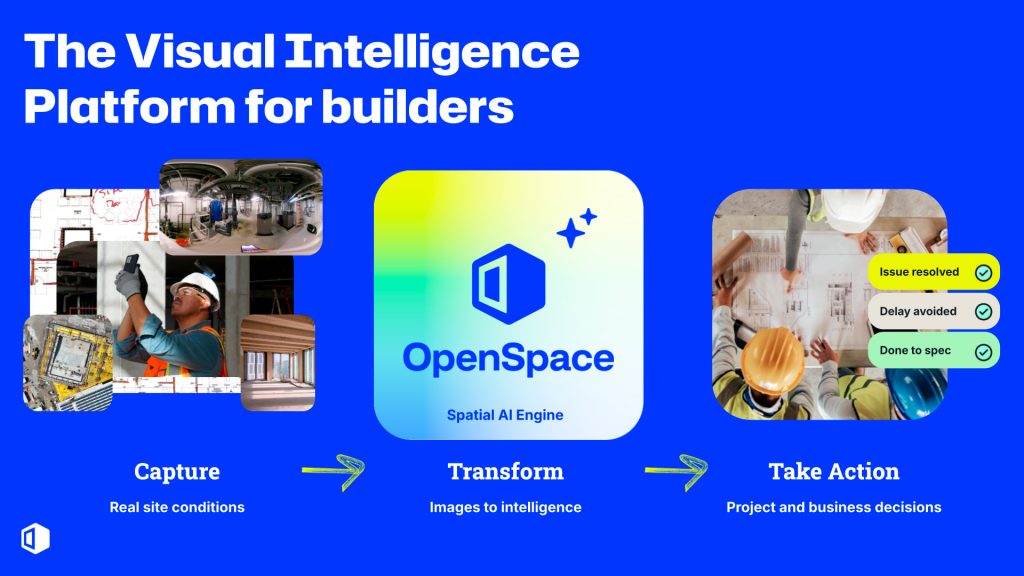Image-first platform turns reality data from the field into ‘trusted, actionable intelligence’
OpenSpace has launched its Visual Intelligence Platform for construction, which is designed to turn reality data into what the company describes as “trusted, actionable intelligence.”
The platform helps optimise field workflows such as punch lists and issue logging, while also delivering business insights including percent complete and productivity tracking.
“With OpenSpace’s Visual Intelligence Platform, we finally have real-time visibility into what’s happening on all our projects, across our entire business,” said Paul Chambers, project director, Skanska UK. “Instead of relying on delayed reports, our teams can spot issues immediately, make faster decisions, and reduce costly surprises. It’s a new level of confidence for both our field teams and our leadership.”
OpenSpace has also expanded its portfolio with two new products — OpenSpace Field and OpenSpace Progress Tracking — joining its established lineup of OpenSpace Capture, OpenSpace BIM+, and OpenSpace Air.
Find this article plus many more in the September / October 2025 Edition of AEC Magazine
👉 Subscribe FREE here 👈
OpenSpace Field is billed as a field-first system of work powered by Spatial AI. With just a smartphone, teams can capture, track, and manage site data, with every image automatically pinned to the right location in floorplans and aligned to BIM models.
These capabilities integrate with Procore and Autodesk Construction Cloud to improve coordination. According to OpenSpace, beta customers have reported 85% time savings when addressing common field tasks like punch lists and logging issues.
“With the new AI features of OpenSpace Field, we can take a photo, say what we see, and trigger work in our project management system,” says Felipe Dominguez, product manager, construction technology at Suffolk.
“It saves us time, and it helps all of our stakeholders, from trade partners to owners, stay aligned to keep the project moving forward.”
OpenSpace Progress Tracking is designed to turn reality data into ‘high-level insights’ to validate work-in-place for billing, identify schedule risks early by comparing actual progress to planned milestones, and deliver what the company describes as trusted progress summaries to all stakeholders. It also integrates with schedules in P6, Asta, Microsoft Project and Excel.






